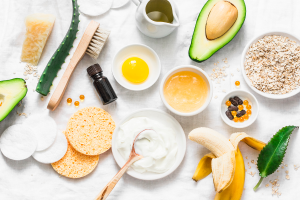The Centers for Disease Control (CDC) estimate that there are over 76 million cases of food borne illnesses in the US every year. Symptoms range from mild to extremely severe. Most people recover in a day or two, but 5000 people every year die from contaminated food, according to the CDC’s national statistics. The vast majority of cross-contaminations can be avoided by following a few precautionary measures.
1. Choose the right foods
The first tip on how to avoid cross contamination is to choose only fresh products without rot and mold. Fruits and vegetables should be with an intact peel. Remember, meat, fish, and dairy products must be bought only at specially adapted outlets equipped with refrigerators, separate clean trays, etc. Meat, fish, and dairy products outside the refrigerator are especially hazardous.
Pay attention to the date of manufacture, and do not take expired goods for prevention of cross-contamination. Take into consideration that pasteurized foods last longer and spoil less often than raw foods.
2. Hand washing
Hand washing is the single biggest preventative when it comes to cross-contamination. Therefore, washing your hands before contacting food, during preparation, and before eating is extremely significant.
Wash hands with hot, soapy water for at least twenty seconds. Wash half-way up the forearm. Use this procedure before beginning food preparation, after touching raw meat or eggs, or any time after using the restroom to prevent cross-contamination. Use a paper towel, or clean dry hand towel to dry hands. If you use a towel, replace it with a clean one immediately. Plastic gloves can be used for further protection.
More: 8 Simple Ways to Spring Clean Your Home Faster
3. Keep clean while cooking
The main source of germs in the kitchen is unwashed hands, raw food, and food waste. During heat treatment, the bacteria on the products die, but they can remain on hands, dishes, tables, cutting boards, and household rags. Therefore, the cleanliness of these items must be carefully monitored to avoid cross-contamination in the kitchen.
After cooking, you must wash the table and dishes thoroughly and remove garbage. Wash cutting boards with detergents, rinsing with hot water. In addition, kitchen towels, rags, and potholders should be changed frequently, washed, and thrown away when worn out.
4. Preparing food hygienically
During the cooking process, products must be boiled or fried well, especially seafood, eggs, large pieces of meat, and whole poultry carcasses. This is because dangerous microorganisms, such as salmonella, shigella, and even hepatitis A virus, do not survive when processed for at least 10 minutes at a temperature of +70 degrees.
Still, it is necessary that the product has warmed up to this temperature throughout its entire thickness. This condition is more easily met when boiling, so boiled food will always be safer than fried food.
5. Raw meat
Raw meat is the most dangerous ingredient that most kitchens contain. When storing in the fridge, place meat on the lowest shelf to prevent drips and spills. Place meat in a bag or on a plate for further protection. Every kitchen should have two cutting boards, one for raw meat and one for ready-to-eat foods.
Any surface, plate, cutting board, or utensil that comes in contact with raw meat should be disinfected. This can be achieved by soaking the item in distilled vinegar for fifteen minutes before washing with detergent and water. Any sponge used to clean raw juices must be discarded immediately after use.
Do not rinse meat before cooking. The bacteria will be killed during the cooking process and the water that splashes off the food can contaminate the surrounding area.
6. Vegetables
Scrub and wash vegetables prior to cutting. This removes any pesticides or other contaminants that may be on the food. If you are preparing lettuce or cabbage, wash thoroughly and remove the outer layers. If preparing loose greens, like spinach, soak in a vegetable wash for the manufacturer’s recommended amount of time. Following this useful piece of advice, it will be much easier to deal with cross-contamination.
7. Proper food storage
The optimum food storage temperature is below +5 or above +60 degrees, as dangerous microorganisms multiply very quickly at room temperature. This is especially true of meat and fish – in them, bacteria multiply especially intensively.
Therefore, do not leave cooked food at room temperature for more than two hours. As soon as it has cooled, immediately put it in the refrigerator, where it should be stored in a sealed container or plastic container.
Also, keep raw foods separate and as far away from cooked foods as possible in closed containers. Be sure, this rule can help you to prevent cross-contamination.
8. Wash your fridge once a week
A huge amount of dirt, mold, and microorganisms accumulated on the shelves are also big friends of cross-contamination. That is why it is so important to keep your equipment clean.
Make it a rule to review all products once a week and wash and clean the shelves. To prevent cross-contamination, dry the shelves before putting them back in the refrigerator.
9. Watch the temperature
Maintain the correct temperature in the refrigerator to prevent cross-contamination. Make sure that the mark is at most four degrees of heat. Otherwise, the food will not be stored properly, which will encourage the growth of bacteria and microorganisms.
10. Take out the rubbish regularly
Finally, taking out the rubbish regularly is essential to keep your kitchen clean. The kitchen becomes a breeding ground for bacteria if food begins to rot. So, do it every day to prevent cross-contamination and keep your kitchen hygienic.
Using these procedures will lessen your chance of joining the millions of people that are infected with food borne germs every year. Hand washing, proper meat handling, and washing your vegetables before preparation will protect you from preventable contamination. It will also save you the embarrassment of being the one that got others sick.
More: 11 Awesome Ways to Refresh Your Room for Winter
Below, we have compiled a list of the most interesting questions about how to avoid cross-contamination in the kitchen:
What is food cross-contamination?
If you eat contaminated food, the symptoms can be unpleasant and sometimes severe. Therefore, food contamination should be avoided whenever possible.







